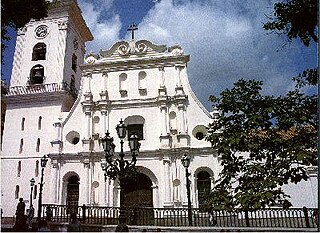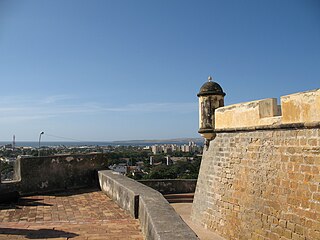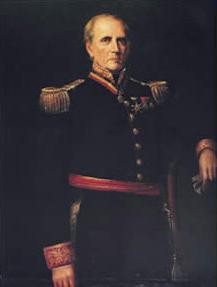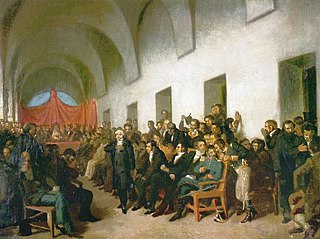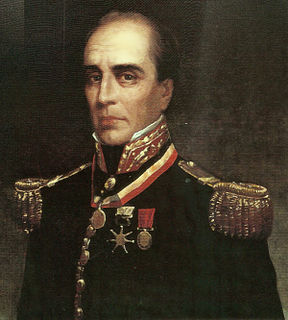
Rafael José Urdaneta y Farías was a Venezuelan General and hero of the Spanish American wars of independence. He served as President of Gran Colombia from 1830 until 1831. He was an ardent supporter of Simón Bolívar and one of his most trusted and loyal allies. Urdaneta served as the Minister of Defence whilst Simón Bolívar was President of Gran Colombia.

Pedro José Ramón Gual, was a Venezuelan lawyer, politician, journalist and diplomat.

Martín Tovar y Tovar was a Venezuelan painter, best known for his portraits and historical scenes.
Venezuelan art has a long and eventful history. Venezuela's museums and galleries are well on the way to forming a new discourse in which the public can experience and interact. Capturing the Venezuelan public view and interact with the installations and collections within a museum setting, re-establishes a new base for understanding the Venezuelan patron. This considered, the museum visitor is better understood and served as it is realized that a modern Venezuela, is represented as a diverse culture, intertwined with the traditional. The proactive cultural center strives to reacquaint itself with its audience, who in fact, are participants and beneficiaries of such cultural and heritage organizations. An effort by the Venezuelan government to connect its people to its cultural organizations, is a response to a cultural diversity and changes within.

The National Pantheon of Venezuela is a final resting place for national heroes. The Pantheon was created in the 1870s on the site of a ruined church on the northern edge of the old town of Caracas, Venezuela.
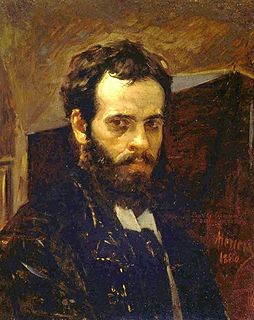
Antonio Herrera Toro was a Venezuelan painter, art critic and professor.
National Prize of Plastic Arts of Venezuela is an annual award given to various artists from that country, specifically the field of drawing, printmaking and drawing pictorial. It is one of the National Culture Awards.
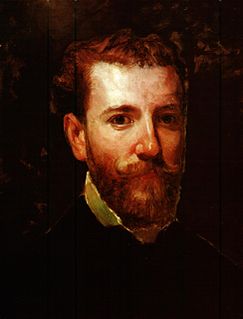
Emilio Jacinto Mauri Ivern was a Venezuelan painter who specialized in portraits; mostly of an historical nature.

Miguel Navarro Cañizares was a Spanish painter and art teacher who worked in Venezuela and Brazil.

Juan Vicente Gómez Landaeta, better known as Pájaro, is a Venezuelan painter whose work has reached from figurative painting to expressionism and surrealism.

Mercedes Clementina Marta del Carmen Pardo Ponte, known as Mercedes Pardo was a Venezuelan abstract art painter.

Carlos Medina is a Venezuelan visual artist. His work has been shown in Italy, France, Belgium, Yugoslavia, United States, South Korea, Austria, Hungary, Spain, Mexico, Chile, Argentina, Colombia, Panama, Costa Rica and Venezuela.
Basque Venezuelans are citizens of Venezuela who are of Basque ancestry.
Marius Sznajderman was a painter, printmaker and scenic designer living and working in the United States.
Esther Alzaibar is a Puerto Rican ceramic artist. She was a ceramics professor in the Institute Neumann from 1972 to 1976 and also taught at the School of Cristobal Rojas from 1974 to 1976. She is seen as a pioneer for the art of ceramics, by being one of the founders of the Venezuelan Association of the Arts of Fire (Fuego) and for the significant pieces that are a part of the heritage of the Museum of Contemporary Art of Caracas.
Francisco Hernáiz was a Venezuelan military officer and political figure during the 19th century. Born in Puerto Rico he achieved the grade of Rear admiral and performed his duty as Secretary of War and Navy during the governments of José Antonio Páez, José María Vargas and Carlos Soublette. His names figures among the Navy Forefathers of Venezuela.



